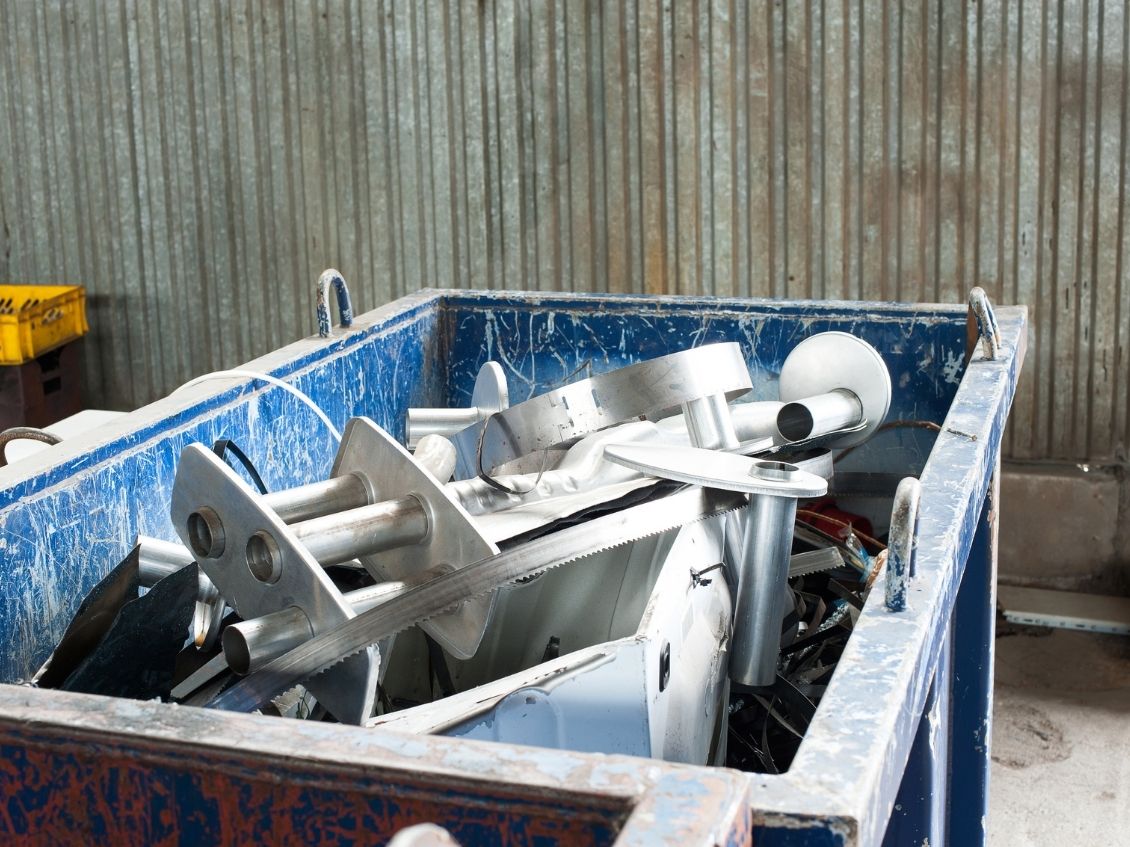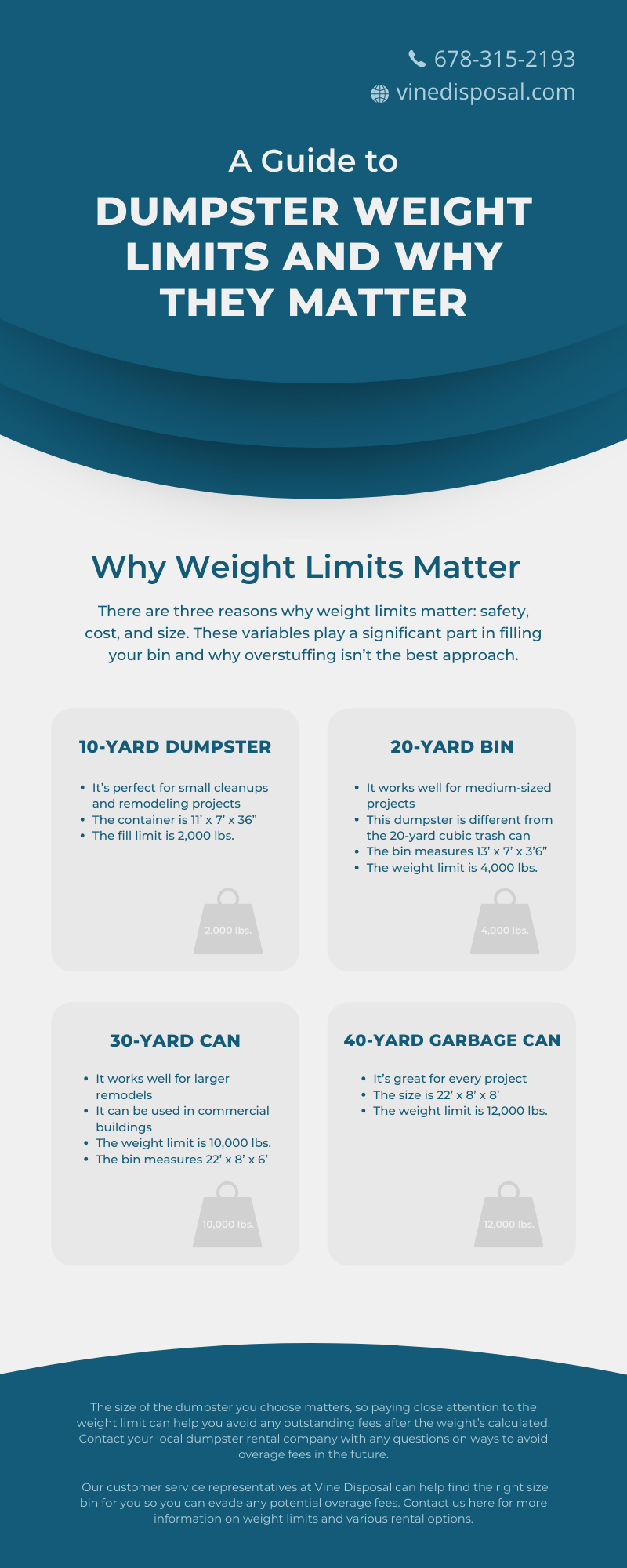
When you rent a dumpster, it’s important to know about weight limits. You might not know how much trash you’ll have, especially for big projects. But putting too much in your dumpster can lead to problems.
Here’s an easy guide to why weight limits matter, how the dumpster is weighed, and what size might work best for your job.
Why Do Weight Limits Matter for Dumspter Rental?
There are three big reasons to watch your dumpster’s weight:
Safety
When a dumpster is too full, it can be a little risky. Heavy bins are harder to move, and if items are stacked too high, they might fall out and cause someone to get hurt.
Many dumpsters have a “max fill” line marked on them to show the safe limit. If it looks like you’re getting close to that line, it’s a good idea to reach out to your dumpster company. They can help you figure out what to do next, or even bring another dumpster if you need it.
Cost
If your dumpster has more weight than expected, there may be some extra charges.
It’s a good idea to ask your dumpster rental company:
-
How much weight is included in the dumpster rental price?
-
What happens if I go over the dumpster rental weight limit?
-
Can I pay a flat fee for the dumpster rental, or do you charge by weight?
Knowing these answers ahead of time will help you stay on budget and avoid surprise fees.
Size
Each dumpster has a limit to how much it can hold.
Bigger projects need bigger dumpsters.
For example:
-
A small 10-yard dumpster can hold about 2,000 pounds.
-
A large 40-yard dumpster can handle up to 12,000 pounds.
If you get the wrong size, you might go over the weight limit—and that might add a little extra fees. Choosing the right size is very important.
How a Dumpster’s Weight Is Measured
When your dumpster is picked up, it’s taken to a weigh station to determine the weight of the trash. The process begins with weighing the full dumpster before it’s emptied. After the trash is dumped out, the empty dumpster is weighed again. By comparing the two weights, the difference shows how much the trash inside the dumpster weighs. This helps the dumpster rental company figure out if you’ve gone over the weight limit and if any additional fees are needed.
Each Dumpster Sizes Weight Limits
Dumpster Sizes and Weight Limits
Let’s look at common dumpster sizes and how much they can hold:
10-Yard Dumpster
-
Good for small cleanups or home projects
-
Size: 11' x 7' x 3'6"
-
Weight limit: 2,000 pounds
20-Yard Dumpster
-
Good for medium jobs like deck work or old appliance removal
-
Size: 13' x 7' ft x 3'6"
-
Weight limit: 4,000 pounds
30-Yard Dumpster
-
Great for big remodels or commercial jobs
-
Size: 22' x 8' x 6'
-
Weight limit: 10,000 pounds
40-Yard Dumpster
-
Best for full cleanouts or demolition work
-
Size: 22' x 8' x 8'
-
Weight limit: 12,000 pounds
Pick the Right Dumpster for Your Job
Choosing the right dumpster size helps you:
-
Stay safe
-
Save money
-
Avoid going over the weight limit
If you’re not sure what size to get, don’t worry! At Vine Disposal, we’re here to help. Just give us a call at 678-315-2193 or visit our website. Our team will help you pick the perfect size dumpster so you can clean up without stress—or surprise charges.

